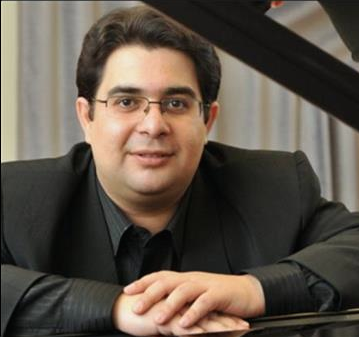New York Concert Artists and Associates presents Pianist Gábor Farkas in Review
New York Concert Artists and Associates presents Pianist Gábor Farkas
Weill Recital Hall at Carnegie Hall, New York, NY
March 10, 2016
NYCAA (New York Concert Artists and Associates), under the direction of Klara Min, has had a record of discovering some highly interesting musicians to present in debut, and Hungarian pianist Gábor Farkas is no exception, though he may have too many credentials already to be considered a “new discovery.” Born in 1981, and having earned an impressive list of appearances and accolades, as well as a doctorate from the Liszt Academy of Music in Budapest, Mr. Farkas is already enjoying an active career – but it may be that the best is yet to come.
His program included Scarlatti (two Sonatas – E Major, K. 531, and A Major, K. 533), Schubert (Impromptu in G-flat Major, D. 899, No. 3), and Schumann (the Symphonic Etudes, Op. 13). After intermission came an all-Liszt group. The bill of fare may not sound remarkable, but the interpretations were distinctive.
From the opening Scarlatti Sonatas, the mark of the pianist’s individuality was apparent in the treatment of texture. Seemingly free from performance practice constraints, some sections were handled with generous harmonic blending (with pedal) juxtaposed with a much drier sound elsewhere. Some say that any Scarlatti played on a modern piano is a transcription of sorts, so rules can be cast aside. Most pianists, though, strive for some consistency of texture, if not actually approximating the sounds of the harpsichord and clavichord. Mr. Farkas seemed unconcerned with any such conventions, bringing out the piano’s wide range of timbres and the compositional uniqueness of each disparate phrase as it appeared to suit him.
Throughout the first half of the program, one couldn’t quite decide whether to embrace this individuality, a rarity in a sea of generic pianists, or to challenge the rather freewheeling approach to architecture, tempo, and other musical considerations. Mr. Farkas’ phrasing was intriguing, particularly in some subito piano surprises and expressive changings of course. His interpretations overall were also always thought-provoking, even when the reasoning behind some of his decisions eluded one. On the other hand, there were some liberties that jolted, some unsettling tempo fluctuations, and some perplexing pedaling at times.
Schubert’s Impromptu in G-flat was compelling, with the appealing vocal qualities one wants in Schubert. Mr. Farkas was not at all afraid to stretch a phrase in poignant ways. With such a well-known piece, it was refreshing to hear it as if for the first time. Now and then the stretching became a tad fussy, but that was hardly a steep price to pay for the overall profusion of ideas and beautiful highlights. There were many inspired moments.
Where the alternate stretching and pushing became detrimental to the music for this listener was in the Schumann Symphonic Etudes, particularly the finale, where a unified march-tempo is the underpinning, despite the sequential episodes that break the fanfare. There is plenty of excitement without pushing the speed each time the march re-ascends – and in fact, rushing undercuts the excitement that mounts to the work’s grand finish. There are many such moments in this well wrought work, where the composer has all the drama “baked in the cake” – needing little help from the performer beyond patience, stamina, and an identification with the inherent drama and lyricism.
Mr. Farkas’ more mercurial approach to Schumann works ideally with that composer’s sets of smaller character pieces such as the Davidsbündlertänze or the Fantasiestücke, which I would be interested to hear him play. He is simply overflowing with his personal brand of interpretive energy – a quality some may find overwhelming or intrusive to the score, but others will find the best reason to go and hear him play.
Works of Franz Liszt filled the second half, two of which were transcriptions based on works by other composers, first the Waltz from Gounod’s Faust and then the Danse Macabre of Saint-Saëns, quite a bravura pairing. Mr. Farkas projected all the requisite drama and virtuosity, showing ample strength and pianism through both. Liszt’s own Ave Maria, S. 182, sensitively handled, gave a breather of sorts before (Liszt’s) Totentanz, the virtuosic closer.
Totentanz, or (“Dance of Death”) a tour de force of octaves and pyrotechnics, is a work one doesn’t see performed every day (thankfully, in this reviewer’s opinion), but it was given a rousing reading. Mr. Farkas’ sense of diabolic drama and color was in full play, alternating wicked impish staccato figures with menacing tritones, blistering octaves, and still more octaves (have I mentioned that there are octaves?). Even as a staunch defender of Liszt against the usual charges of excessive flash, I couldn’t help thinking afterward that there must be works worthier of a fine pianistic talent in his prime, as Mr. Farkas is.
The audience gave a very noisy standing ovation and was rewarded with a mellow rendition of the Schumann-Liszt Widmung as the encore.

